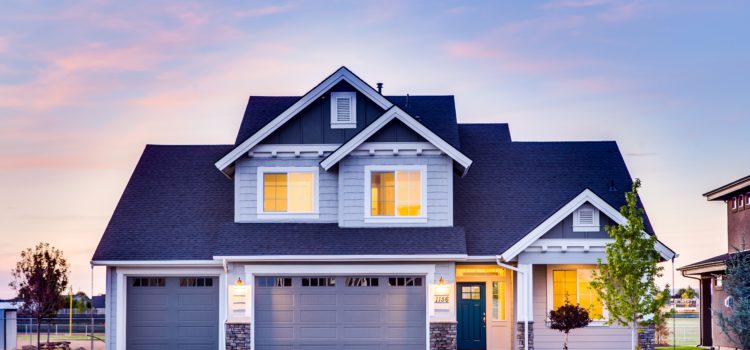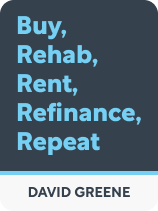

This article is an excerpt from the Shortform book guide to "Buy, Rehab, Rent, Refinance, Repeat" by David Greene. Shortform has the world's best summaries and analyses of books you should be reading.
Like this article? Sign up for a free trial here .
Is the BRRRR method difficult to master? What are some BRRRR method examples that make it easier to understand the process?
Many real estate investors are opting to use the BRRRR method coined from David M. Greene’s book, Buy, Rehab, Rent, Refinance, Repeat. It can be a little daunting to invest so much money with a method you’ve never used before, but there are BRRRR method examples that you can follow.
Let’s take a look at an example of the BRRRR method that walks you through the different stages of the model.
What Is the BRRRR Method?
The BRRRR method is the most efficient way to build wealth and gain financial freedom by developing a large portfolio of investment rental properties. It’s laid out as so:
- Buy a property below market value and pay full price (without mortgage payments).
- Rehab, or renovate the property, paying for it out of pocket.
- Rent the property.
- Refinance the property.
- Repeat: Use the money from refinancing to buy and rehab a new investment property.
The goal is to pay as little as possible for the property and rehab it to increase the value as much as possible. Ideally, through refinancing, you recover all of your investment (or sometimes more), and you use that money to buy and renovate the next property. (Greene acknowledges that recouping your entire investment is a “home run”—something to strive for, but not something to expect on every project.) By pulling your money back out of the project, you make the same dollars work for you over and over, thereby increasing the velocity of your money.
Here’s one BRRRR method example: Imagine you find a fixer-upper for $95,000 and spend an additional $25,000 on renovations, making your total initial investment $120,000. After the improvements, the home is appraised for $160,000. You refinance, and the lender grants you a loan for 75% of this ARV, or $120,000. You’ve recovered your entire investment to use for your next property, and, as long as the tenants’ rent covers your mortgage and expenses, you’ve gained a consistent source of income. Greene asserts that even if the income from each property is just a few hundred dollars a month, this model allows you to quickly build your volume of properties and multiply that cash flow.
A BRRRR Example in Detail
To duplicate the BRRRR method example above, you must go through intricate steps that require the utmost work and dedication. This ensures that the process will go as smoothly as possible. Let’s look at this example in detail, by each step.
Getting a Good Deal on a Home
Using the example of the BRRRR method above, imagine you want to recover a fixer-upper that’s $95,000, which is under market value. To identify if this is a good deal, Greene says you have to determine the property’s ARV (after-repair value), the renovation costs, and how much you’ll be able to charge for rent.
First, calculate your ARV and rehab expenses to gauge whether it’s possible to recover your capital when you refinance. As discussed, Greene recommends aiming for a 75% LTV, a loan worth 75% of the property value. With this rate, if your combined purchase and rehab costs are 75% of your ARV, then you’ll recover your entire investment when you refinance (for this BRRRR method’s example case: $120,000).
Estimating your ARV depends on the type of property you’re buying:
- Single-family home values are based on the recent sales prices of comps, or comparable properties in the area. To analyze comps, Greene suggests consulting local real estate agents, appraisers, and websites like Zillow and Realtor.com. (Shortform note: Comps should be similar in style, size, condition, age, and bedroom and bathroom count.)
- Multifamily property values are based on their potential profitability through rents. To determine how much you can charge for rent, talk to local professionals (like investors and property managers) and use rent calculators on websites like Rentometer.com and Biggerpockets.com. (Shortform note: To calculate the market value, divide the capitalization rate (cap rate) by the net operating income (NOI). The cap rate is the average of similar properties’ cap rates in the area—and that is the purchase price divided by the NOI. To get the NOI, total future rents and other income and subtract all expenses—including taxes, insurance, maintenance, and property management.)
Second, estimate how much you can charge for rent to calculate whether your property will cash-flow positively, meaning your rental income will more than cover your mortgage and expenses. As a general rule, Greene says that if you can rent the property for at least 1% of the purchase price, you’ll probably have a positive cash flow.
Making Strategic Repairs and Upgrades
As you plan the second step in your BRRRR journey, Greene writes that you must be strategic about how you approach repairs and upgrades: Maximize the value of the property—to maximize both the appraisal when you refinance and the rents you can charge tenants—but be aware that there is a point of diminishing returns. If you turn your fixer-upper into a five-bedroom, custom-designed home, there will still be a ceiling to the property’s appraisal and rent values based on the neighborhood and other external factors.
Here are examples of ways you can maximize the value of your property to a limit.
- Add only enough square footage to put your property on par with comps (comparable homes in the area). When you do make additions, try to capitalize on existing structural components—for example, build out onto an outdoor patio’s concrete foundation.
- Add bedrooms if the home has fewer than three, but don’t go over four; at that point, the value gains drop off. If you can, turn existing spaces into bedrooms instead of adding onto the home.
- Add a bathroom if the home has only one.
- Prioritize kitchens and bathrooms, both of which factor significantly into appraisals and rent prices. Upgrade these spaces with fresh paint and new cabinetry hardware. Splurge on high-end materials in small quantities, like the tile for bathroom floors and kitchen backsplashes.
Renting Out Your Property
Greene recommends that in the next stage, you set rent prices at the lower end of your estimate initially to attract tenants and fill vacancies quickly. Then raise rents to the higher end of that range during lease renewals—at that point, most tenants are willing to pay more to avoid moving. Greene states that setting your lease periods to expire during the spring or summer, will attract more renters because that’s when they’re looking for homes.
Refinancing
Next, you’ll need to refinance your property. Greene writes that refinancing in BRRRR is comparable to selling in a house flip (when investors buy fixer-uppers, rehab them, and then sell the properties for profit): In either scenario, this is the stage when the investor recoups their investment in the property. Before reaching this stage, you should have already gotten a loan pre-approval that gives you a baseline for your refinance. Here are some examples of loans that may fit your BRRRR project:
- Conventional loan: Many lenders offer conventional loans because they’re partially insured by the government, making this a common option for new investors. For investment properties, this loan typically requires a 20-25% minimum down payment.
- Portfolio loan: This is a loan that the lender or bank (often a credit union or savings and loan association) holds in its portfolio, rather than selling it to a secondary buyer. Although these loans have higher interest rates than non-portfolio loans, they’re critical for high-volume real estate investors because a conventional loan can’t finance more than 10 properties.
- Federal Housing Act (FHA) loan: This loan allows for a lower down payment and lower credit score, but it requires you to pay mortgage insurance unless or until you refinance later.
From the BRRRR method example above, because the investor was able to find the right loan and calculate all the costs correctly, the lender was able to loan the entire initial investment back that can be used to fund the next property.
Repetition Requires Delegation
The final step is probably the easiest step of the BRRRR method: repetition. The one thing you must do during this stage is to delegate your work so the process can repeat itself after you refinance your property.
Greene emphasizes that creating systems requires you to delegate or automate the tasks that you dislike and those that don’t play to your strengths. He cites the Pareto principle, or the 80/20 rule, and recommends focusing your time and energy on the 20% of tasks that you do best and delegating the rest.
The first key to effective delegation is clear communication: Be explicit about what you want and expect to avoid misunderstandings, which waste time and effort. Use checklists, spreadsheets, written instructions, and other means to clarify and standardize processes.
The second key is to consistently delegate to the same people, which allows them to benefit from the repetition by learning from their mistakes and improving their efficiency. If you don’t have the financial means to pay your delegates, Greene suggests finding people who benefit from the experience, the working relationship with you, or your industry knowledge.

———End of Preview———
Like what you just read? Read the rest of the world's best book summary and analysis of David Greene's "Buy, Rehab, Rent, Refinance, Repeat" at Shortform .
Here's what you'll find in our full Buy, Rehab, Rent, Refinance, Repeat summary :
- An explanation of the BRRRR real estate investment method
- How to use the BRRRR method to produce consistent, passive income
- Why you should assemble a "Core Four" team rather than working alone






